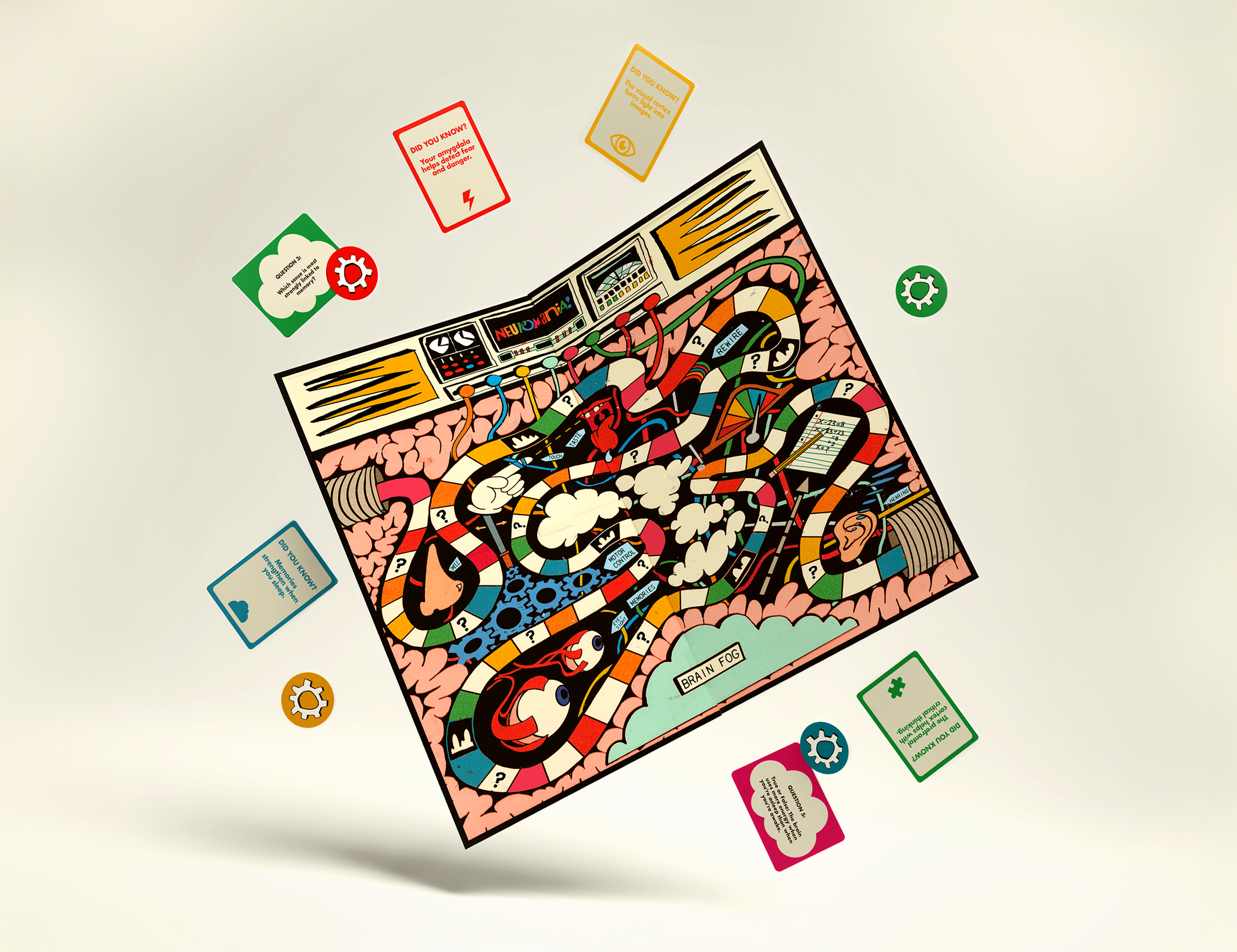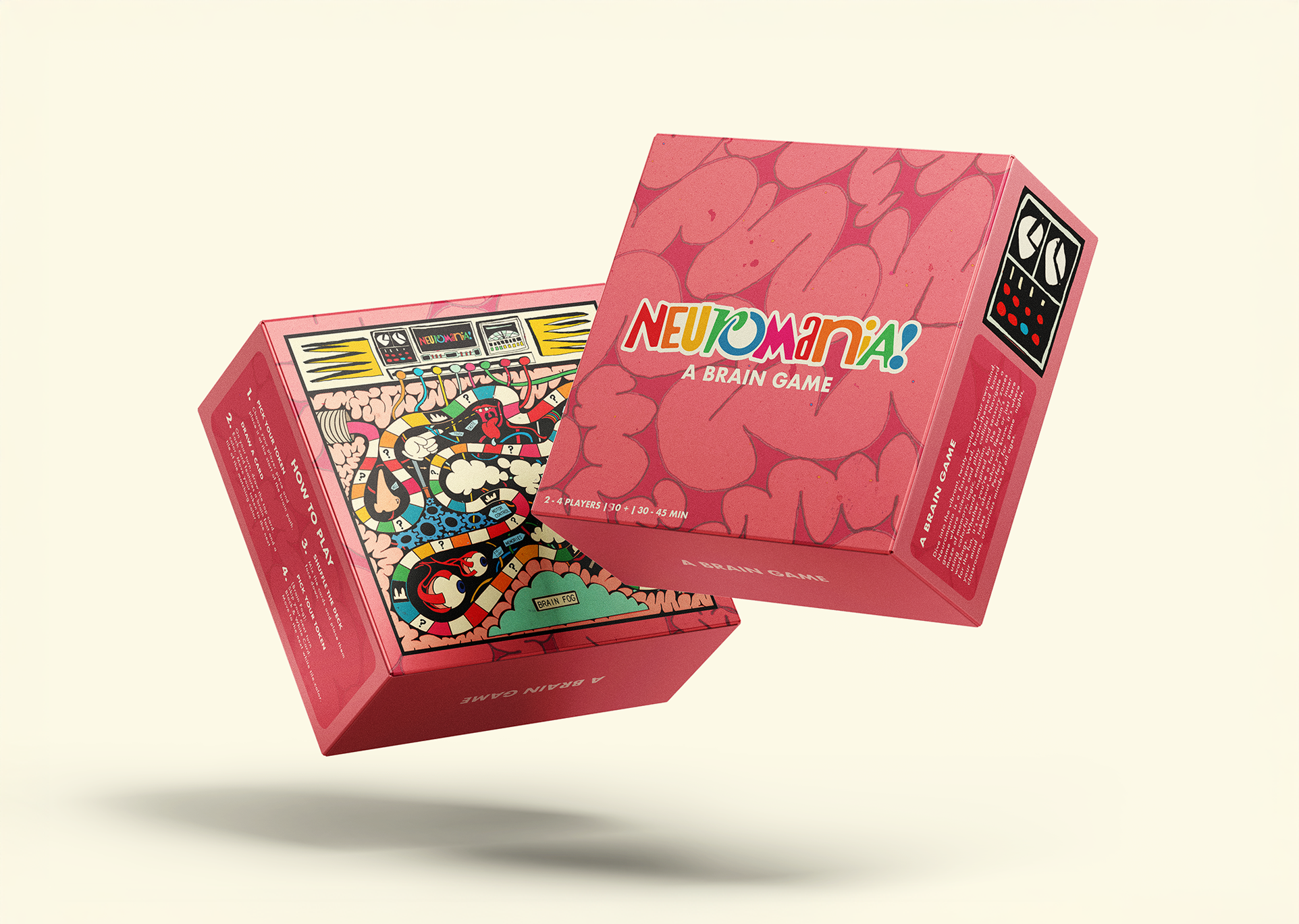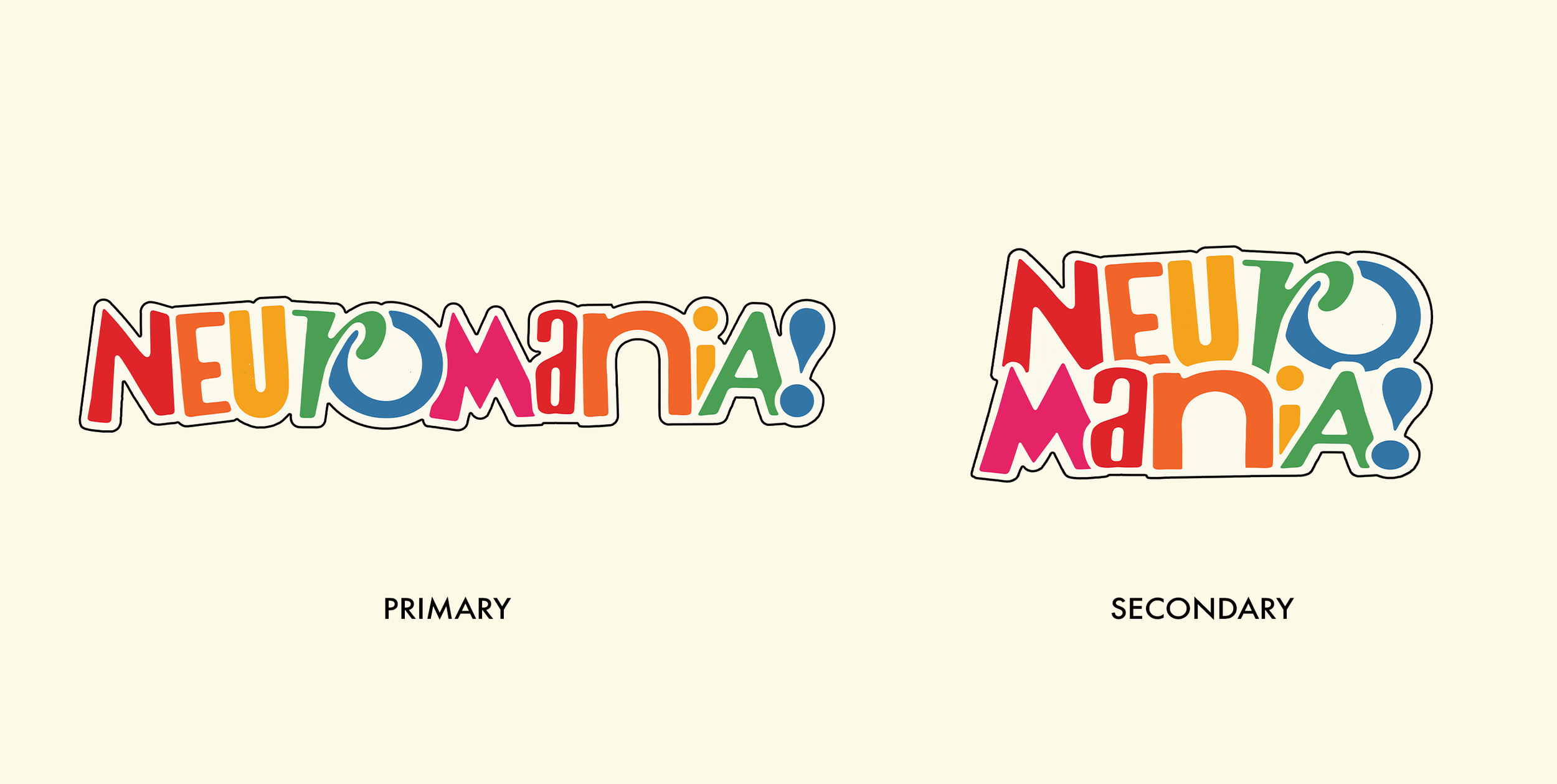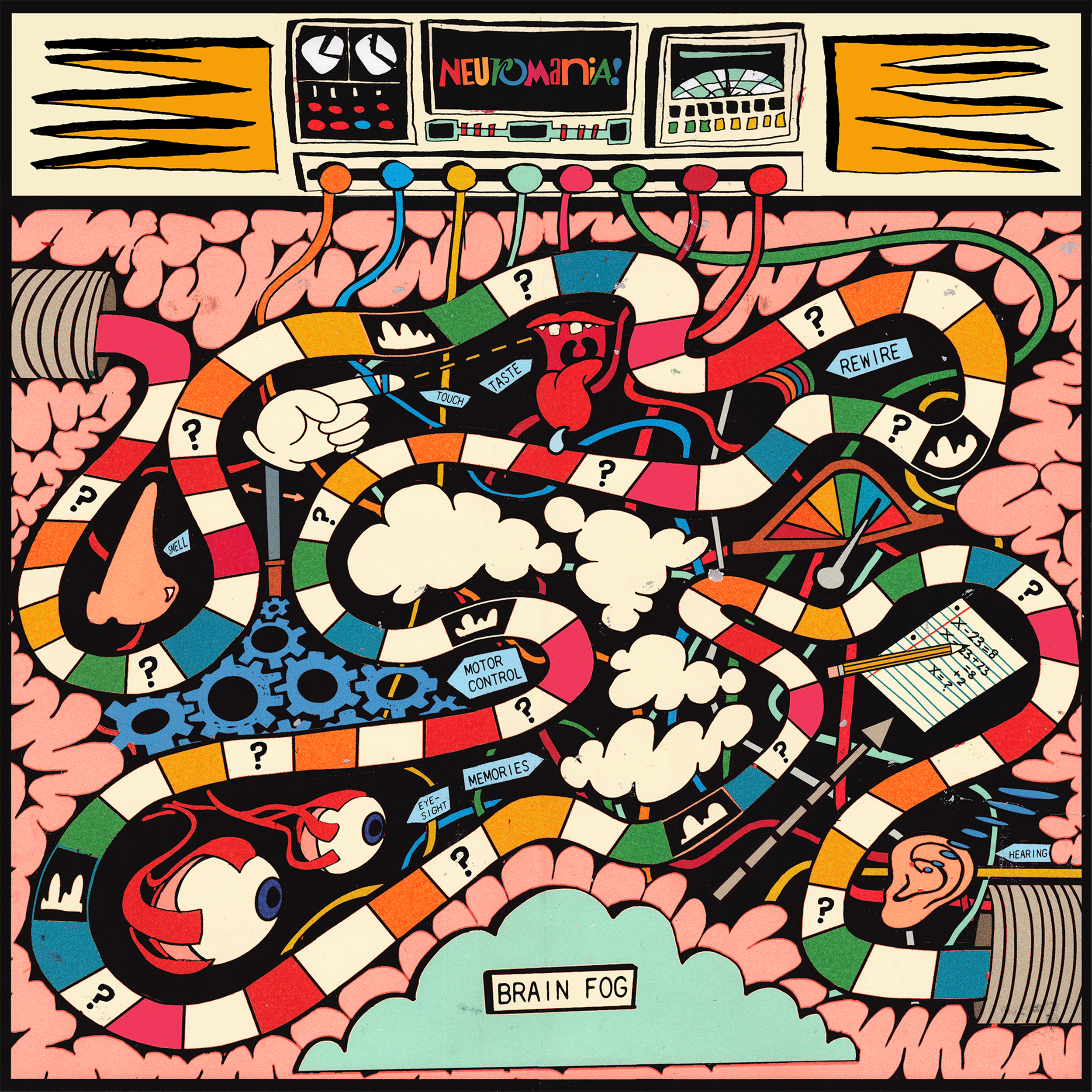Neuromania!
A brain-themed board game that transforms cognitive science into a playful, hands-on experience. The game takes players through key mental functions like the five senses, memory, emotion, problem solving, and more. Rather than creating a traditional fact-based trivia game, Neuromania uses abstract icons, sensory zones, and gear-shaped player tokens to reflect how interconnected brain processes move, shift, and influence each other.






